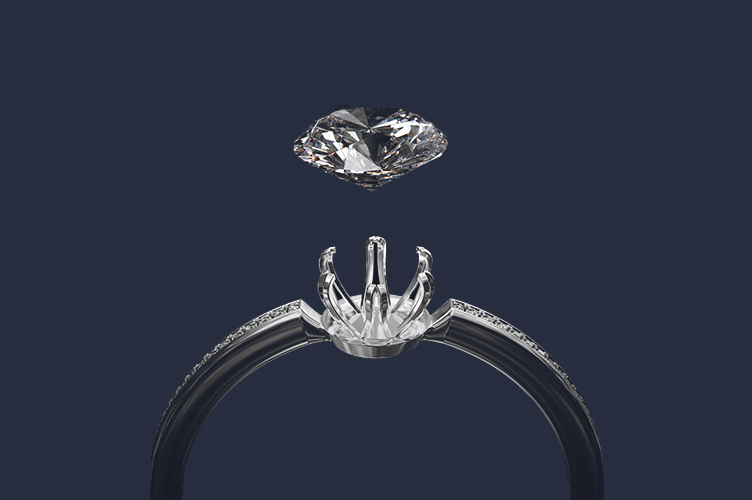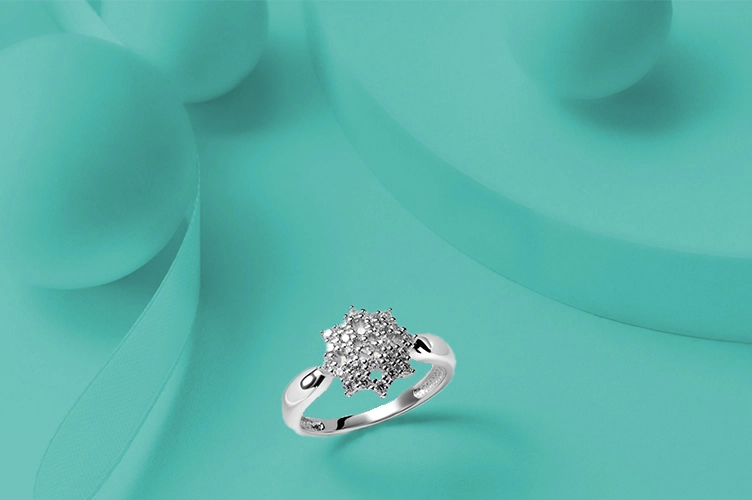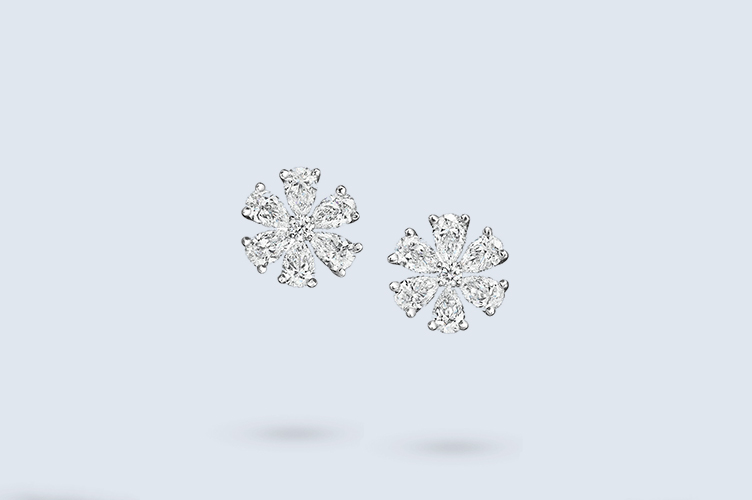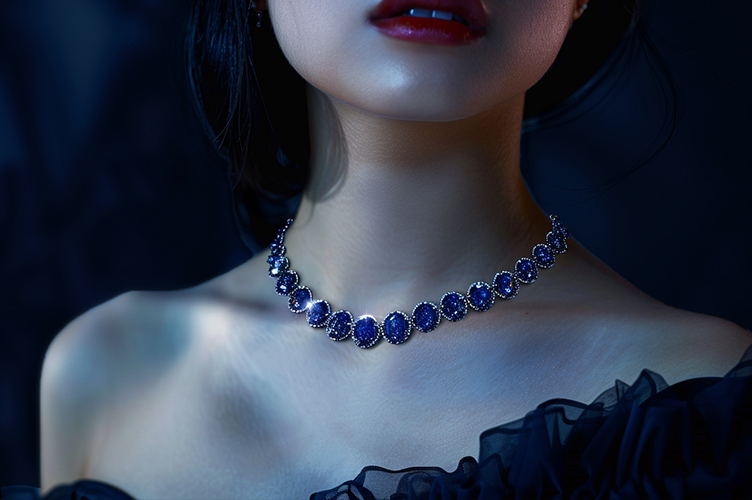As you delve into the world of engagement rings and wedding bands, you need to consider the many different types of diamond settings there are to choose from. The setting secures the diamond or diamonds in your engagement ring. If you want a wedding band that also contains diamonds, you’ll have to decide what setting you like for those diamonds too. And honestly, the setting does so much more than just keep those diamonds secured. It’s also what sets the overall vibe and style of the ring. So let’s explore the various diamond settings, learn their pros and cons, and find the perfect one!
What You Will Learn
Types of Diamond Engagement Ring Settings
1. The Bezel Setting:
The bezel setting encircles the diamond with a metal rim, holding it securely. This setting provides excellent protection for the diamond, making it a great choice for anyone who is especially active or works with their hands. It offers a modern and sleek look and shows off the yellow gold, platinum, or other type of metal you choose.
Pros: Enhanced protection, contemporary design.
Cons: Slightly lower diamond visibility and sparkle since the bezel doesn’t allow as much light to reflect in and out of the stone.
2. The Prong Setting:
The classic and timeless prong setting uses metal claws or prongs to hold your diamond in place. This engagement ring setting allows maximum light to enter the stone, highlighting its brilliance and fire. Prong settings offer versatility, enabling various arrangements like a solitaire setting with a single stone or a multi-stone ring, like a three-stone style with a larger center stone. A well-known prong setting is the iconic Tiffany setting, which uses six prongs to showcase a solitaire diamond.
Pros: Optimal light exposure, versatility, iconic look.
Cons: Prongs may catch on objects, requiring occasional maintenance.
3. The Cluster Setting:
This type of engagement ring setting creates a sparkly effect by grouping smaller diamonds in a cluster or floral-like pattern. Often, this gives the illusion of a larger center stone.
Pros: Budget-friendly alternative, impressive visual impact.
Cons: Smaller diamonds may require occasional tightening.
4. The Tension Setting:
In tension settings, the diamond is held in place by the pressure of the metal band. This setting creates a modern and minimalist aesthetic, with the diamond seemingly suspended between the two ends of the band. A tension style setting provides excellent exposure to light, enhancing the diamond’s brilliance.
Pros: Contemporary look, maximum light exposure.
Cons: Requires precise expert craftsmanship and potential resizing challenges.
5. The Halo Setting:
Halo settings feature a central diamond surrounded by a “halo” of smaller diamonds, accentuating its size and brilliance. This setting adds sparkle to a solitaire engagement ring and creates a captivating focal point. An iconic halo-set engagement ring is the blue sapphire Princess Diana ring has a halo of prong-set white diamonds.
Pros: Enhanced diamond size and brilliance, vintage appeal.
Cons: Requires additional maintenance for smaller diamonds.
A Note on Cathedral vs. Non-Cathedral Settings for Engagement Rings:
Most diamond engagement rings fall into two categories: cathedral or non-cathedral. In a cathedral setting, the metal arches or prongs rise above the band, allowing the diamond to sit higher. This engagement ring style is luxurious and elegant, emphasizing the diamond’s prominence. On the other hand, non-cathedral settings keep the diamond closer to the band, offering a sleeker and more understated appearance.
Types of Diamond Settings for Wedding Bands
The wedding band can bring a lot to the overall statement when it comes to classic engagement ring styles like solitaire rings. If you’re considering a wedding band with diamonds, these are the settings you need to know.
1. Pavé Diamond Bands:
Picture this: a wedding band adorned with tiny diamonds, closely set together, creating a breathtaking display of brilliance. The pavé setting gives the illusion of a continuous line of diamonds, like a cobblestone pathway of shimmering beauty. The word pavé even means pavement in French, so just think of a diamond-coated street. Whether you choose a full (eternity) or half pavé band (half-eternity), it adds glamour and sophistication to your finger.
Pros: Creates a continuous line of dazzling diamonds, maximizing sparkle.
Cons: Requires more cleaning than other ring styles to keep the diamonds sparkling.
Say Bonjour to the French Cut Diamond
2. Channel Set Diamond Bands:
Imagine a smooth, unbroken band with a row of diamonds securely nestled within a groove. That’s the allure of a channel set diamond band. The diamonds are placed in a channel-like setting, providing a sleek and seamless appearance. Sometimes called a bead setting,” a channel setting is perfect for those seeking a modern and refined look, as it allows the diamonds to shine while ensuring their protection. Usually, the channel goes all the way around the diamond ring, but it could stop halfway or be set upfront in a bar setting.
Pros: Seamless and refined look, diamonds are securely nestled within the channel
Cons: Channel setting may limit the visibility of the diamonds from certain angles.
3. Flush Set Diamond Bands:
If you desire a wedding band with a minimalist and contemporary flair, a flush set diamond band is what you’re looking for. Sometimes referred to as a “gypsy setting,” the diamonds are meticulously set into the band, aligning perfectly with its surface. This creates a seamless and smooth finish, where the diamonds appear flush with the metal. The result is a sleek and understated design that exudes effortless elegance.
Pros: Minimalistic and contemporary design, smooth and seamless surface less prone to snagging on clothing or objects.
Cons: Limited diamond visibility due to the diamonds being flush with the band.
Keep Your Engagement Ring and Weddings Bands Protected with Jewelry Insurance
Proper insurance is necessary for ALL diamond jewelry. And thanks to BriteCo, protecting your diamond jewelry is affordable and easier than ever.
BriteCo offers affordable specialty jewelry insurance that covers up to 125% of your ring’s appraised value. Our policy covers loss, theft, damage, and mysterious disappearance.
Get an instant free quote for an affordable monthly or annual payment. Then you have to upload the required documentation, and you’ll be covered in minutes.
Also Check:
Get Educated on the Different Types of Diamonds
The Ultimate Engagement Ring Buying Guide
Different Ways to Wear Your Wedding Ring











